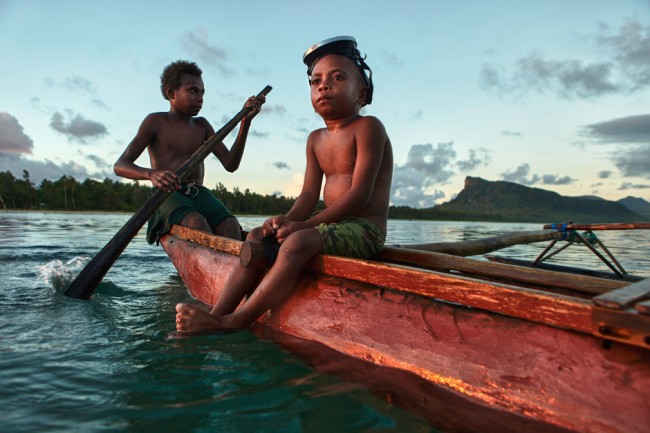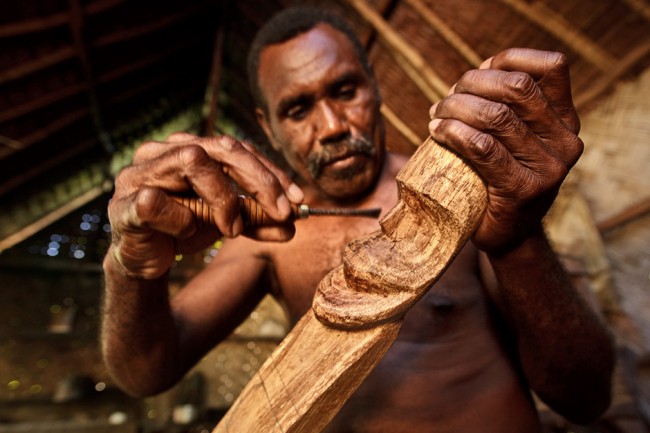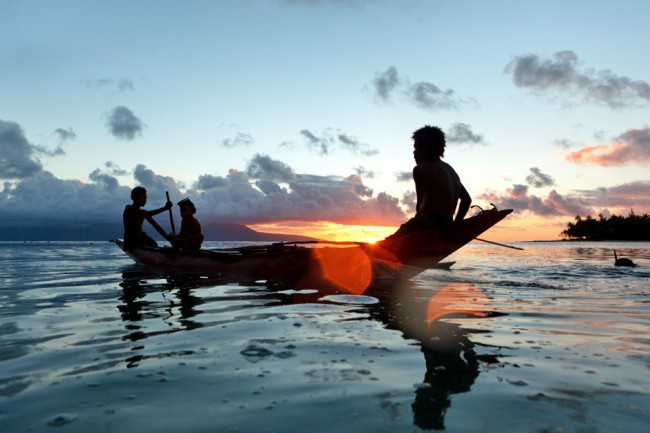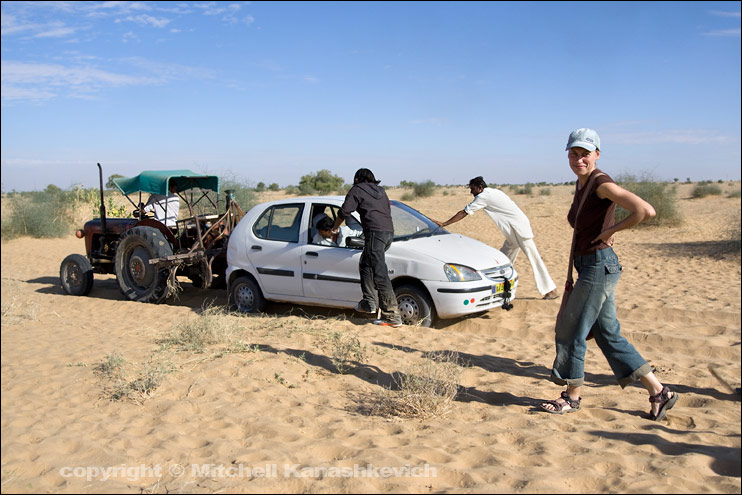Dramatic landscapes, kind, warm people and photographic inspiration at every corner - this was my romanticized vision of Ethiopia. Perhaps this vision was what made me all the more disappointed and emotionally deflated, when for over a month I came across more rudeness, dishonesty and overall strange treatment than anywhere else I had traveled. It took time and a lot of luck to meet the right people, to finally find the Ethiopia I dreamt of, but I have found it and, it is A-m-a-z-i-ng! I'll give you a bit of a background story to put things in perspective and then, to the photos.
Close to Paradise
As I mentioned in my last post about Bob, my photography to assist tourism development continued in Rah Lava and to a lesser extent the bigger, neighbouring Mota Lava. The two islands belong to the very remote Banks group, they’re pretty much in the middle of nowhere, surrounded by endless stretches of the Pacific ocean. If you’re looking for a place to completely escape the busy, modern world and you like the sea, this is the place to escape to.
I’ve seen a lot of beautiful places over my travels and it’s not that easy to impress me anymore, however, I am a sucker for sea and mountains and whenever I find a place with both, well, I instantly fall in love. It’s not that I like to climb mountains, it’s that I love the sight of mountains rising over the sea. In my books it’s hard to come up with a better backdrop to a photograph than something like that. The beach and the lagoon at Rah Lava offered me those very kinds of backdrops, along with some fairly thick, lush greenery in the island’s interior. Besides the great scenery Rah Lava had something else to offer and that was some incredibly amazing (usually very expensive, but not here) seafood – I managed to live out my dream of eating lobster for breakfast, lunch and dinner (ok, I’m sick, I know, but it’s so tasty). Of course, to top it all off, as elsewhere in Vanuatu the people were absolutely wonderful. Quite naturally, I had to stay a while in Rah and I did, it was my longest stay in Vanuatu so far – two and a half weeks.
The reason I came to Rah was because George Thompson, the man I was helping out in South West Bay advised me to make the journey there and help out a man (in the same way – take photos for marketing) by the name of Luke Dini or Father Luke as he introduces himself (he’s a retired pastor). Both George and Father Luke were members of Vanuatu’s bungalow association, in fact they were probably the first two men to join a few decades back. The association was meant to set some sorts of standards for bungalows as well as service in those bungalows. The government was meant to help out and direct tourists to those places which were a part of the association.
It appears however that whatever project the government of Vanuatu undertakes, that project is destined for not fulfilling its potential and that has certainly been the case here. Father Luke opened his Bungalow in the seventies and he waited for fifteen years for the first foreign visitors, who happened to be a group of New Zeland Yachties needing to stay on land for just one night. After that there were no more tourists for another five years, but for whatever reason Father Luke didn’t abandon his idea of running a bungalow.
For years the place would receive just a handful of visitors a year, most of them - discount-seeking government workers who found the bungalow through the association (they seem to be the only people who turn to the association to find accommodation). From my understanding, the income was meagre, but Father Luke understood; for a small community like that of Rah Island, tourism was the only kind of business that would empower the locals and give them a chance to earn a decent enough income. Perhaps more importantly, it could keep the youth closer to home and this is a big thing, considering that many young, ambitious Ni-Vans leave remote places like Rah in search of jobs on the more developed Efate (where the capital Vila is) and Santo (where the second capital Luganville is located). Most often the youth come back, disillusioned, disappointed in their experiences in the world outside. The money they earn on the more developed islands is small in comparison to their sky-high expenses of living away form home. Things like food and accommodation are free for them, while they stay close to home in the huts that they build, near their gardens and the sea in which they know every fishing spot. In the outside world everything has a price tag and because of foreign investment and influence, things are pretty much out of reach for the regular citizen of Vanuatu.
When the youth come back to places like Rah after a disappointing tenure in the capital, they find themselves in an unusual situation. Having been exposed to the world of televisions, DVDs and night clubs they can’t look at life in a quiet island paradise without modern facilities in quite the same way. Sometimes they come back with new skills, which they can’t use because there are no industries of any sort. They’re left in-between two words, confused, a little frustrated and dreaming of what things would be like if their fortunes turned.
Father Luke had a vision, he felt that the presence of tourists on Rah could contribute to the entire community. Starting from the canoe-taxi across the lagoon from “mainland” Mota Lava, which every visitor must take to get to the bungalow, to the fishermen, lobster and coconut crab catchers who sold their catch to his the restaurant, to the traditional dance performers and so on. Everyone would benefit, everyone interested would have a chance to earn an income which was while fairly small, went a long way on an island like Rah. I was surprised that Father Luke was able to see such a big picture, this was very unusual for a man from a remote, forgotten island in the Pacific.
It turned out that Father Luke, besides being a Church pastor in the past, was a politician in the more distant past. In fact he was second in charge of all of Vanuatu during the colonial years and secretary to the president, once Vanuatu gained its independence. I was pleasantly surprised that Father Luke resigned from his high position because he strongly opposed the increasing corruption in the higher ranks of the government. It was then only at the beginning of its growth, these days the corruption in Vanuatu is legendary.
“My wife liked living the lavish lifestyle, having chauffers and eating in restaurants, so she didn’t want me to quit. I told her this; we can continue like that, but in a few years you will lose your husband, for I cannot stand living a lie, I’ll probably die from stress, from a heart-attack or something like that. I want to keep my dignity and to be able to look in the eyes of the people back home on Rah.” These were Father Luke’s words, to which his wife replied – “Let’s go home” meaning their modest house on Rah Island.
And so in some ways Father Luke is similar to George Thompson. He is a man who puts dignity and community above money and easy life. Thankfully, unlike George, after years and years of struggle things have taken turn for the better for Father Luke’s bungalows. They probably get close to thirty visitors a year on Rah Island and although the number does not seem impressive, it is when you consider the beginnings.
Since this is a photography and travel blog, I feel obliged to tell the readers about Rah Island as a travel destination, not only a photography destination. As I mentioned, it’s the ideal place to escape the hustle and bustle of the modern, developed world. It’s still not luxurious comfort living, but there is solar power, a shower and flush toilets – things that are not so common in the outer islands of Vanuatu. Father Luke’s bungalows are pretty cheap too, not South East Asia cheap, but fairly cheap by other standards. It’s about US$30 per person per day and that includes food, which after my recommendation will include more fresh fish and the possibility to eat lobster and coconut crab whenever your heart desires.
Ok, that’s enough of that. Let’s get to the photographs. The one above is of a local kid doing a back-flip from a canoe in the lagoon.
Saron returning from her family’s garden with the village dog. Vanuatu is one of the greatest agricultural societies on the planet, every family has a garden and every village family lives from one. The gardens are usually located somewhere in the bush and almost daily a family member will venture out there in order to tend to the crops or to bring some produce back home.
Silas and Young lobster hunting. The men look for familiar spots where they’re likely to find the crustaceans. The easiest time to catch them is during the moment of feeding, which lasts for approximately half an hour in the evening.
Silas putting one of the lobsters into the boat.
While on the subject of edible crustaceans, here’s another one – the legendary coconut crab. Near extinction in most of the world, the coconut crab is in abundance in lots of the Torba province, of which Rah and Mota Lava are a part. As you can see they grow pretty big, in fact according to Wikipedia, it is the largest-living arthropod on the planet. Those claws mean business too, Joseph is very experienced at catching and handling the creatures. Here some village youngsters watch him as he separates the coconut crab from his bate – the coconut.
As I mentioned in the last post, the men of Vanuatu are generally pretty amazing tree-climbers. By the time they’re teenagers they are strong enough to climb some crazy-big trees. David is one such teenager. As many other boys his age he climbs up trees to hunt (with a sling-shot) small birds and flying foxes, a delicacy in many parts of Vanatu.
Another image of Bob and his son Jeff. I wanted to include this one here just to emphasize the incredibly clear water around the reef. I’d dreamt about being in places like this for a looong time, now I feel like I’m getting a little spoilt.
The view out the front of the bungalow, just after sunset. Like I said, I’m a sucker for sea and mountains.
Dimitry (front) is one of Father Luke’s grandchildren. The kid is a CHARACTER, that’s for sure. He’s only four, but he’s very savvy, Tanya had to work real hard to become his buddy, he’s the type of kid who you have to constantly attract with something interesting. Dimitry is also unusually interested in his tradition (for a small child) he always tries to perform the island’s famous snake dance with the bigger boys and has a great sense for music and rhythm.
Franklin is a master wood carver, he creates some true masterpieces. Interestingly though, while Franklin learned the technique of wood-carving from his father, he learned how to carve more complex traditional works from photographs taken in a Museum of Pacific Arts somewhere in Europe. His ancestors sold a lot of the carvings to Europeans over a century ago and even the elders in his village (on Mota Lava) had never seen the carvings in the photographs.
Through a strange twist of fate, the “white men” who laid path for the destruction of the culture of the inhabitants of Rah and Mota islands over a hundred years ago also managed to save a part of it and to indirectly help revive the same part of that culture many decades later.
Franklin is a fascinating man and not only because of his determined approach towards wood-caring, it wasn’t unusual for him to go through five pieces of wood before getting things just right. Franklin is also a field worker of Vanuatu’s cultural centre, which means that he studies and records his own culture. Had I had more time I would have gladly spent hours chatting to the man, asking him endless questions.
The snake dance of Rah has become famous all over Vanuatu. It is usually performed at weddings and special occasions, but these days it’s become a regular performance for tourists too. I have to say that usually I think stuff like that is lame, but I’ve reconsidered that approach in Vanuatu and particularly with the snake dance. We watched it about 4 times and every time it was pretty cool.
A dancer having his body and face painted for the snake dance. I don’t know if anyone who is not part of the dance group has been behind the scenes for this dance before, back in the day seeing the preparation was strictly taboo. The paint used, as well as the material of the costumes were the performers’ secret and if anyone were to find out that secret they may have very well been killed, such was the kastom law.
A view from the rock of Rah, one of the most accessible high view points I’ve ever come across (you can get there in about 10 minutes from the village). No photograph will do it justice. From the rock you have a 360 degree of the surroundings and they are magnificent.
I couldn’t resist including another shot of children in a canoe in the lagoon. That place was ideal for photography – dramatic mountain backdrop on one side and the setting sun on the other, doesn’t get much better than that.
That’s all for now folks.
Desert Adventures and Good-Byes
 Tanya and I are back in Bundi (for a very brief moment), where we began the workshop. In the last couple of days we have seen off Kym and Hardik. I’m used to saying goodbyes, but there is still an element of sadness. We never know how life will play out and when or if we will ever meet again with the people who become our friends, while we are on the road.The workshop went very nicely. I really like having one participant; it means that he or she can have a very personal, enriching and genuine experience. I wanted the whole thing to be as close as possible to how I work, minus the research/scouting of locations. Nothing was set up, no special performances, just real life and a chance to interact with the people in the photos. At times Kym felt a little overwhelmed by the sheer amount of people and excitement our presence generated (see below), but that’s how it is in rural India, no way around it. I cannot imagine how larger tour groups go on village visits. I suppose when managed the right way things may work out well, but I can also see everything getting out of hand. As far as photography goes, I for sure would not want to be one of eight or more photographers shooting the same person, ending up with a similar image from a different angle. I guess I’ll stand by my views until I am proven otherwise.
Tanya and I are back in Bundi (for a very brief moment), where we began the workshop. In the last couple of days we have seen off Kym and Hardik. I’m used to saying goodbyes, but there is still an element of sadness. We never know how life will play out and when or if we will ever meet again with the people who become our friends, while we are on the road.The workshop went very nicely. I really like having one participant; it means that he or she can have a very personal, enriching and genuine experience. I wanted the whole thing to be as close as possible to how I work, minus the research/scouting of locations. Nothing was set up, no special performances, just real life and a chance to interact with the people in the photos. At times Kym felt a little overwhelmed by the sheer amount of people and excitement our presence generated (see below), but that’s how it is in rural India, no way around it. I cannot imagine how larger tour groups go on village visits. I suppose when managed the right way things may work out well, but I can also see everything getting out of hand. As far as photography goes, I for sure would not want to be one of eight or more photographers shooting the same person, ending up with a similar image from a different angle. I guess I’ll stand by my views until I am proven otherwise.
The “Thar Desert” (well, a small part of it) was the last destination of our workshop. Everything was great in terms of photo opportunities and the ‘realness’ of the villages we came across, they were full of regular, but very colorful and photogenic people who were generally surprised to see us. However, by the end of our little trip I was left feeling disappointed, on a personal level. I’ve concluded that perhaps it’s not possible to get out into the desert on a camel in Rajasthan without seeing the not so nice side (to put it lightly) of people involved in the camel business, without feeling as a source of money first and a person second. I understand the whole financial disparity thing, but throughout my journeys I have come across countless individuals who were very poor, yet extremely dignified, they never begged, never cheated, never tried to take advantage and in short that is not what I saw from the camel folks we were involved with. I guess I might skip the camel riding next time. Perhaps I was naïve to have thought that this time it would be perfect, or maybe I am too idealistic and spoilt by my amazing experiences around India, in any case there is no point in always anticipating the worst in people, so I’ll keep doing the opposite.
Our trip was not without its share of magic – tea by the fire under the starry sky, waking up to the golden light in a farm settlement on the outskirts of the desert, not hearing anything apart from the singing of the birds and later the beating of plates, used to scare the birds from eating the crops, the swaying of the camels as they navigated terrain that no vehicle could get through, the next morning’s photo shoot in the sand dunes – all beautiful moments that make this area of Rajasthan so special. A small adventure occurred, as we were ready to head back. The driver that was meant to pick us up took the wrong way and got stuck in the sand – a big payday for the local folk, but at least I got to ride a tractor through the desert terrain as we came to the rescue. Perhaps moments like these, the beautiful ones and those which would seem absurd in the ‘West’ are part of the reason why I still love this region of India – there is a sense that a surprise is just around the corner, something that will stimulate your senses or overwhelm you with beauty - a reason to stay alert, to feel alive, to be totally present in the moment.
Riding a motorcycle in India
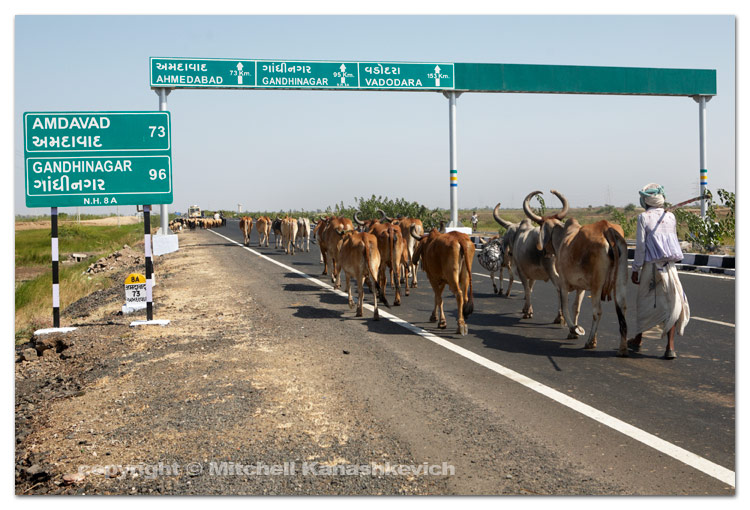 The ride to Ahmedabad was a reminder why I love this life on the road. Just me and my wife Tanya, riding through what are often beautiful, unfamiliar lands, experiencing everything together – this has been a large part of our lives over the last three years. In many ways it is as romantic as some may think, but there is another side, one which is not so nice.The beauty you see is sometimes matched by the horror (to me at least) - the amount of killed dogs on the roads is impossible to count, the scenery is not always ideal - ugly buildings and industrial, smoke belching areas really do not make for inspirational riding. And then there are the road users, who, well let’s just say they do not always act as one might expect, nor do the pedestrians – I’ve had much more close calls than I would have liked to, over the years. To top everything off there is the ‘pain in the butt factor’ (literally) – over a long journey a motorcycle seat becomes the least comfortable place in the world and even a roach-infested hotel starts to seem like a welcoming alternative.
Riding around India is not easy, but it is far from impossible and not as insane as many visitors to India may think. All that one needs is the knowledge of how the Indian roads work, once things begin to make sense everything starts to feel much less daunting.
The ride to Ahmedabad was a reminder why I love this life on the road. Just me and my wife Tanya, riding through what are often beautiful, unfamiliar lands, experiencing everything together – this has been a large part of our lives over the last three years. In many ways it is as romantic as some may think, but there is another side, one which is not so nice.The beauty you see is sometimes matched by the horror (to me at least) - the amount of killed dogs on the roads is impossible to count, the scenery is not always ideal - ugly buildings and industrial, smoke belching areas really do not make for inspirational riding. And then there are the road users, who, well let’s just say they do not always act as one might expect, nor do the pedestrians – I’ve had much more close calls than I would have liked to, over the years. To top everything off there is the ‘pain in the butt factor’ (literally) – over a long journey a motorcycle seat becomes the least comfortable place in the world and even a roach-infested hotel starts to seem like a welcoming alternative.
Riding around India is not easy, but it is far from impossible and not as insane as many visitors to India may think. All that one needs is the knowledge of how the Indian roads work, once things begin to make sense everything starts to feel much less daunting.
Here are some simple tips for those who want to ride a motorcycle around India or simply want to know what it’s like.
Buy a motorcycle that will not keep breaking down Buying a 20-year-old Enfield that has been ridden by every foreigner in Goa that ever wanted to ride a bike is not a good idea. I have used a Bajaj Pulsar and a Hero Honda CBZ. I prefer the first and this is the bike that I still have. Both are 150cc bikes, but they will get you through almost any tough roads. The Pulsar gives a better mileage per liter and from personal experience I can say that I have pushed it to the max and beyond and it survived. These bikes can be bought second hand; I wouldn’t go for anything that is more than 5 years old. To give an idea of a price - my 2003 Pulsar cost 33,000 Rupees in 2007. It was in great condition and didn’t have any breakdowns throughout the journey. Those who have more cash to fork out or prefer a bigger bike – go for one of the newer Enfields, from every single account I have heard that the old ones break down very often, but a wise young Indian man told me that his new Enfield hasn’t had so much as a flat tire, that sounds good to me.
Size Matters On Indian roads whoever is bigger has the right of way. Do not try to play chicken with a truck; you may not like the results. The only exception to the rule is the cow; it roams the streets freely, at a leisurely pace, while everyone stops and gives way.
Volume Matters – The horn is your friend Everyone on Indian roads uses the horn with no remorse. The louder your horn the more chances you have of being heard by the half-asleep truck driver who is listening to very loud music and blocking your lane to overtake him. The horn should be used in many situations. When you see a grandmother crossing the road with a pile of wood on her head without looking to either side – use the horn. When you approach a herd of cows or goats – use the horn; they will often part for you. When you want to overtake a vehicle – use the horn. When you go through a forested area, which potentially houses animals you should scare the crap out of them, so they do not come near the road – use the horn Basically any time you are in doubt – use the horn.
Expect the unexpected Just because a one-way, two-lane road means one-way in your country doesn’t mean it is the same in India. You will see vehicles in the wrong lane all the time, but I was surprised the first time I saw a truck doing 80 km/h in the opposite direction of a one-way national highway. Indian road users seem to be very practical and rules are only obeyed if they serve a practical purpose. Petrol is relatively expensive in India and going 5km till the next U-Turn to get into the correct lane is seen as not practical. Other unexpected occurrences include animals and children running onto the middle of the road and then there are the tree thorns. Apparently the Indian government made the initiative to plant a certain type of tree along the roads, so as to make India greener and less polluted. It just so happens that the tree grows huge thorns and in the dry season, when some of the branches fall off, they inevitably end up on the roads. The thorns will puncture your tires; ask me, I spent a month recovering from an accident after puncturing the front tire of my bike and loosing control.
Flash your headlights When a vehicle is speeding towards you at an insane speed in your lane and you have no place to give way, the signal to communicate your predicament is to flash your headlights. The more you flash them the more urgency you communicate. For the ultimate effect flash the lights and sound the horn.
Learn to read the road This is kinda obvious, as we must learn to look for clues that could signal a potential hazard on the roads at home. However there are additional hazards in India as well as additional signals. For example - a turbaned man carrying a long stick over his shoulder is a shepherd and if you are seeing him, there is a good chance that his herd of cattle is soon to follow.
I’ve got your back The reason why you may often see vehicles turning or doing maneuvers in the middle of the road without ever checking the mirrors or looking behind is because the vehicle coming from behind is expected to be aware that the one at the front can do anything at any time. This rule mostly applies to city/town roads with heavy traffic, however doing it like the locals is not really recommended, just be aware of things are.
Riding after dark is not a good idea First there are the huge bugs that smash against the helmet screen, or take out your eyes if you don’t have protection. There are also the wonderful drivers/riders who only use high beam on roads outside well-lit areas. If you are heading in the opposite direction of a vehicle that is using the high beam you pretty much cannot see anything except for the light, considering that a cow could a few meters in front, this is not a very good situation to be in. Then there are those vehicles which are huge, but look like small vehicles because they only have one light working. A big truck can easily look like a motorcycle when one of its headlights is broken, but mistaking it for a motorcycle can lead to a very unhappy ending.

Well, that’s about it. I’ve probably missed a lot, but then a whole book can probably be written on the topic of motorcycle riding around India.









